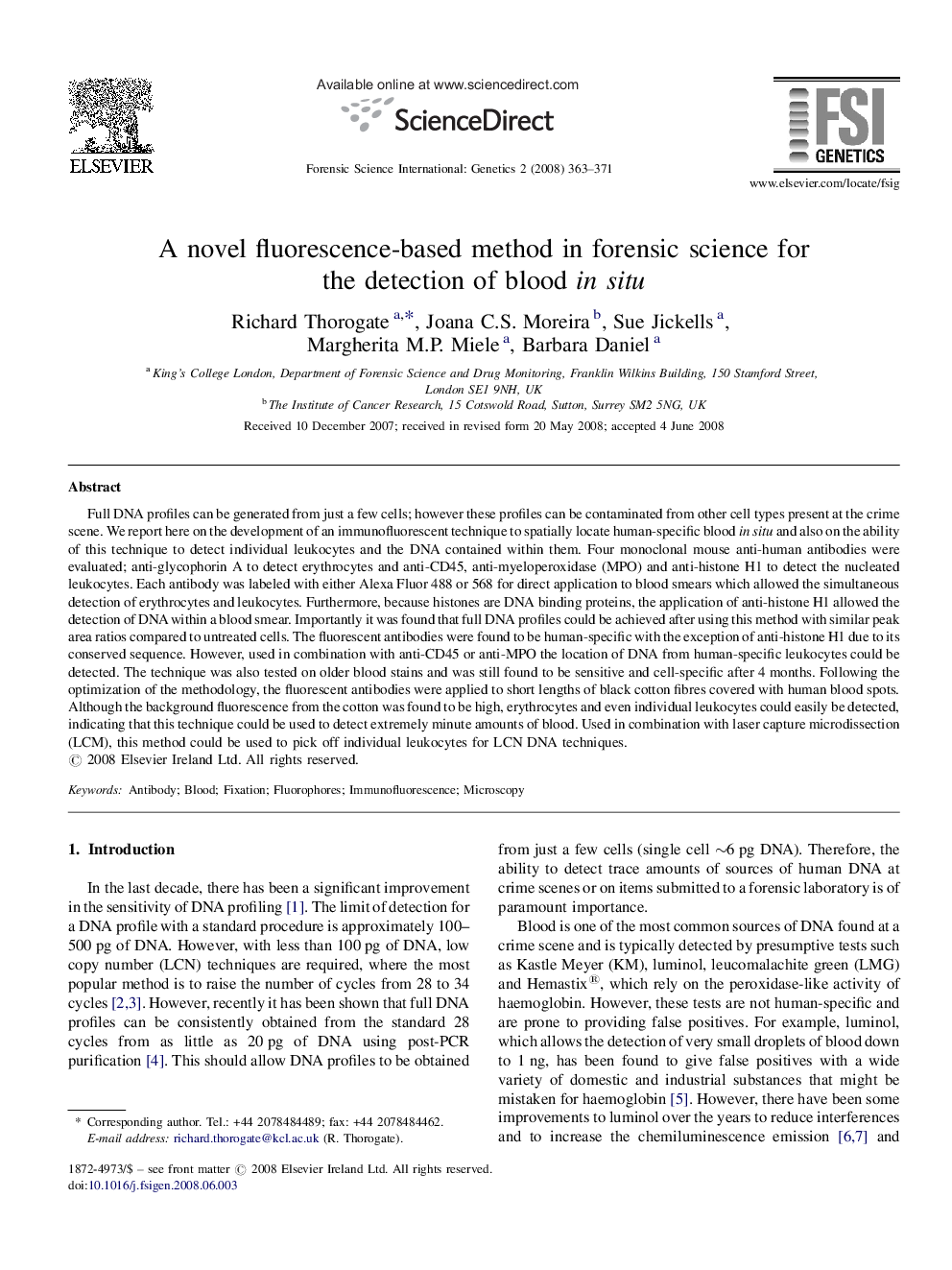| کد مقاله | کد نشریه | سال انتشار | مقاله انگلیسی | نسخه تمام متن |
|---|---|---|---|---|
| 99070 | 160919 | 2008 | 9 صفحه PDF | دانلود رایگان |

Full DNA profiles can be generated from just a few cells; however these profiles can be contaminated from other cell types present at the crime scene. We report here on the development of an immunofluorescent technique to spatially locate human-specific blood in situ and also on the ability of this technique to detect individual leukocytes and the DNA contained within them. Four monoclonal mouse anti-human antibodies were evaluated; anti-glycophorin A to detect erythrocytes and anti-CD45, anti-myeloperoxidase (MPO) and anti-histone H1 to detect the nucleated leukocytes. Each antibody was labeled with either Alexa Fluor 488 or 568 for direct application to blood smears which allowed the simultaneous detection of erythrocytes and leukocytes. Furthermore, because histones are DNA binding proteins, the application of anti-histone H1 allowed the detection of DNA within a blood smear. Importantly it was found that full DNA profiles could be achieved after using this method with similar peak area ratios compared to untreated cells. The fluorescent antibodies were found to be human-specific with the exception of anti-histone H1 due to its conserved sequence. However, used in combination with anti-CD45 or anti-MPO the location of DNA from human-specific leukocytes could be detected. The technique was also tested on older blood stains and was still found to be sensitive and cell-specific after 4 months. Following the optimization of the methodology, the fluorescent antibodies were applied to short lengths of black cotton fibres covered with human blood spots. Although the background fluorescence from the cotton was found to be high, erythrocytes and even individual leukocytes could easily be detected, indicating that this technique could be used to detect extremely minute amounts of blood. Used in combination with laser capture microdissection (LCM), this method could be used to pick off individual leukocytes for LCN DNA techniques.
Journal: Forensic Science International: Genetics - Volume 2, Issue 4, September 2008, Pages 363–371